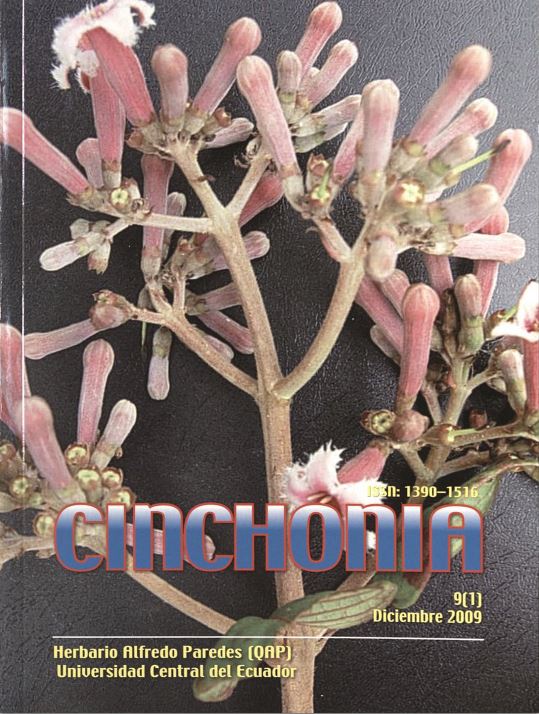BENEFICIOS DE LA FLORA DE LOS BOSQUES RIPARIOS EN FINCAS AGRÍCOLAS Y GANADERAS, SANTO DOMINGO DE LOS TSÁCHILAS-ECUADOR
Contenido principal del artículo
Resumen
En preocupación a la expansión de la frontera agrícola, el presente estudio se realizó sobre la diversidad y usos de la flora remanente de los bosques riparios en 3 fincas agrícolas y 3 fincas ganaderas de Santo Domingo de los Tsáchilas. El trabajo fue realizado ya que la mayoría de estudios etnobotánicos del Ecuador centran sus esfuerzos en áreas protegidas descuidando interesantes remanentes boscosos presentes en zonas productivas. El área de estudio se ubicó entre Santo Domingo y Patricia Pilar (vía a Quevedo), en las fincas estudiadas se establecieron 12 cuadrantes de 5 x 20 m, se colectaron más de 200 muestras vegetales de hasta 1 m de altura (herbolaria) por finca, se realizaron encuestas a los finqueros sobre el nombre local, el uso y la importancia que para ellos tenían las plantas. También se analizó la diversidad y abundancia de la flora existente y, de las encuestas, se extrajo las plantas de mayor importancia económica, medicinal, social, cultural y ecológica. Los mayores usos que se dieron a las plantas fueron: el medicinal, culinario y ornamental. Los finqueros mostraron poco interés en las plantas de importancia ecológica y desconocimiento sobre el significado que estas plantas tienen como refugio y sustento para la fauna presente en éstas áreas. En base al seguimiento y evaluación efectuada, se determinó que los finqueros y pobladores de las fincas agrícolas tienen mayor conocimiento e interés por las plantas que les brindan utilidad directa; mientras que a los pobladores de las fincas ganaderas les era indiferente varias de ellas, pues su interés primaba por su utilidad como alimento para ganado. En el estudio se encontró que las fincas agrícolas fueron las que presentaron mayor abundancia de plantas medicinales, culinarias y ornamentales a la ribera de sus ríos, en tanto que en las de tipo ganadero la presencia silvestre de esta herbolaria fue escasa y de muy poco interés para los finqueros. Las fincas con mayor nivel de conocimiento sobre plantas medicinales fueron las agrícolas, mientras que en las ganaderas, el interés fue exclusivo sobre herbolaria dedicada a pastoreo y/o forraje. Esto se debe a que el ganado de estas fincas llega a pastorear hasta el borde mismo de las riberas de las fuentes de agua y ríos que cruzan por sus tierras. Lo cual inhibe e impide el restablecimiento de la herbolaria propia de esas riberas y un futuro establecimiento de la fauna reinan 12 Cárdenas et al.: Beneficios, Flora Tsáchila te en los sectores riparios acostumbrados a este tipo de vegetación y ecosistemas. Palabras clave: Etnobotánica, diversidad, bosques ribereños, Santo Domingo, Ecuador.

